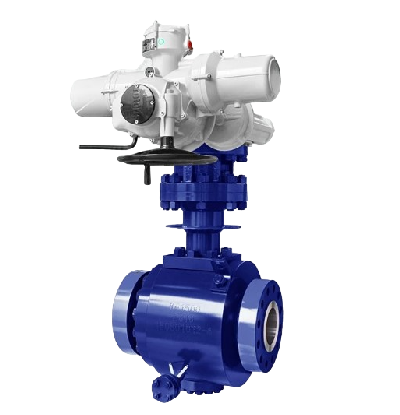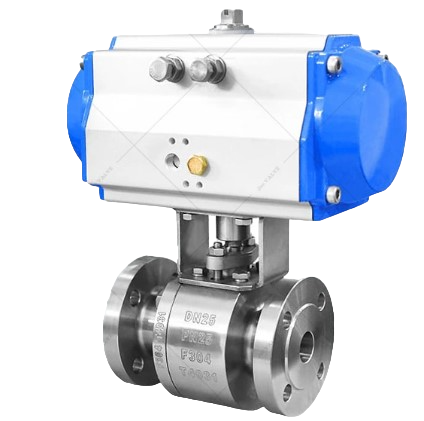Making a Choice Between Electric and Pneumatic Ball Valves
On this page
Ball valves can be paired with different types of actuators, resulting in either pneumatic ball valves or electric ball valves. Each actuator type offers unique advantages and is suited for specific applications. This article provides a comparative analysis of electric and pneumatic ball valves, focusing on their definitions, characteristics, and selection criteria.
When choosing the right type of ball valve for your application, it's crucial to understand the underlying mechanisms and characteristics of the two primary actuator options: electric and pneumatic.
Electric ball valves, also known as motor-driven or electrically-driven ball valves, feature an electric actuator connected to a ball valve. These valves use electrical energy to control the valve's opening and closing actions, regulating fluid flow in pipelines. Electric ball valves are known for their precision and suitability for applications where electrical power is available.
Key Features
Actuation Force: Powered by electricity, resulting in relatively slower actuation speed.
Advantages: High precision, unaffected by air pressure fluctuations, suitable for lower control requirements.
Disadvantages: Higher cost, more complex maintenance, not ideal for explosive environments.

Pneumatic ball valves combine a ball valve with a pneumatic actuator, utilizing compressed air to drive the valve's opening and closing actions. These valves often include additional accessories like solenoid valves and air source treatment units for comprehensive control. Pneumatic ball valves are favored for their simplicity and responsiveness.
Key Features
Actuation Force: Driven by compressed air, offering higher actuation force and adjustable speed.
Advantages: Simple structure, easy maintenance, responsive, and reliable.
Disadvantages: Requires an air source, relatively complex control system.

To effectively choose between electric and pneumatic ball valves, it's important to compare their characteristics across several key factors. Below, we examine the differences in actuation force, switching speed, and structural and safety aspects to help you determine which valve type best meets your needs.
Pneumatic Ball Valves
Actuation Force: Pneumatic valves are driven by compressed air, providing a higher actuation force. They also offer adjustable speed, allowing for more flexibility in control.
Switching Speed: Typically, pneumatic ball valves have a switching time of around 6 seconds, making them suitable for applications that require rapid valve operation.
Electric Ball Valves
Actuation Force: Electric valves use electrical power to operate, resulting in a slower actuation speed compared to pneumatic valves.
Switching Speed: Electric ball valves generally have a longer switching time, ranging from 15 to 20 seconds. This may be less suitable for applications needing quick valve transitions.
Pneumatic Ball Valves
Structure: Pneumatic ball valves feature a relatively simple design, which contributes to their reliability and ease of maintenance.
Safety: They are well-suited for environments requiring high explosion-proof standards due to their robust construction and safety features.
Electric Ball Valves
Structure: Electric ball valves are more complex, incorporating electric actuators that require careful maintenance.
Safety: While offering high precision, electric ball valves are typically better suited for environments with lower explosion-proof requirements due to their more intricate design.
Selecting the appropriate ball valve involves evaluating several factors related to your specific application. Consider the following criteria to determine whether an electric or pneumatic ball valve is best suited for your needs.
Pneumatic Ball Valves: Ideal for explosive environments due to their robust design and high safety. They require a reliable air source and are responsive in operation.
Electric Ball Valves: Suitable for environments where electrical power is available, and lower explosion-proof requirements are acceptable.
Pneumatic Ball Valves: Consider these if high control requirements and intelligent positioners are needed.
Electric Ball Valves: Suitable for locations without an air source, providing ease of operation but may have limitations in safety and stability compared to pneumatic valves.
Choosing between electric and pneumatic ball valves depends on specific application requirements. Pneumatic ball valves are favored for environments with high explosion-proof needs and where a reliable air source is available. Electric ball valves are suitable for applications with lower control demands and where electrical power is accessible. Understanding the key characteristics, advantages, and disadvantages of each valve type will help in making an informed decision to meet the needs of various working conditions.

